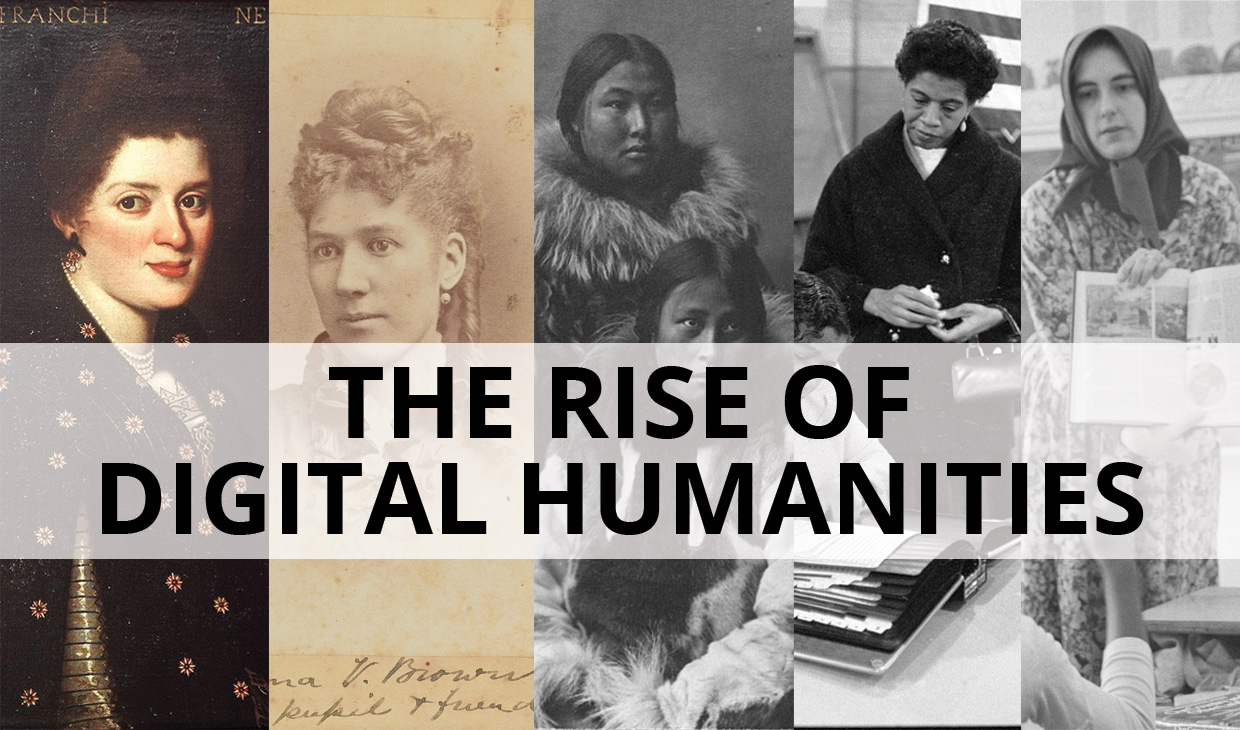Introduction: Humanities and Technology
As a historian, data is not a word commonly used in peer conversation or academic study, although it is centric to the social sciences. Data, after all, is just facts collected that allow humans to build context, make interpretations, and draw inferences based on observation and analysis. Scholars, scientists, and tech wizards all share significant data and information challenges. The challenge that pays most of our salaries is the everlasting search to fill in the gaps, the missing data. Data challenges have always existed but now we must shift our fundamental approach to meet the rapid evolution of technology processes and data science. Scholars of all disciplines should explore how technology, Artificial Intelligence, Machine Learning, and Big Data can impact their field of study.
The proliferation of data over the past century is reconstituting the foundation of epistemology and collective knowledge. We can now begin to look at questions like, “do chairs exist?” using data to challenge long preconceived facts. A great example of this problem can be further explored in Lulu Miller’s, Why Fish Don’t Exist.
Changing Trends
Nearly a decade has passed from the endless hours I tooled around the university library, scanning the catalog for books, articles, and media that would support my assertions. Smithsonian Magazine estimates nearly 1.8 million articles and 30,000 scholarly works are published each year, that is 18 million articles and 300,000 new books since finishing my master’s degree. Libraries are getting too big, with more material than a researcher can realistically consume in a lifetime. It’s a great problem to have but as the problem grows, it becomes harder to address. What is the solution to this proliferation of data? That’s the question everyone should be working to solve.
AI and ML Technologies
Anthropologists, historians, and linguists are starting to find enormous value in technologies like Deep Mind, Ithica AI, and ChronoZoom. A few years ago, I recall seeing an article where scientists recreated what a 3000-year-old mummy sounded like recreating vocal tracts using advanced technologies that now exist. I found the recording to be bone-chilling, deteriorating the peripheral of time and space. Another recent example that has made its way around social media platforms is Deep Nostalgia from MyHeritage. This AI tool allows users to upload photos and produces an animation from the image applying deep learning using a fixed sequence of movements and gestures that mimics human facial movements. If you combine capabilities using the Iceman Otzi (a 5,200-year-old mummy) as an example, you may end up with something like this...
Advancements in ML and AI have allowed scientists to make incredible discoveries and insights that have since disproved existing theories and theses. Tools like Ithica AI and Deep Nostalgia use deep neural networks to restore inscriptions, ancient text, and lost languages. AI/ML technologies are now helping analyze enduring questions that impact our history and future. Epigraphist can use insights derived from these ancient texts to build societal and historical context and compare it with data from other sources.
Since the excavation of the first Dead Sea Scroll in 1946, scholars have debated the origins of the 4th-century BC text. A recent study from researchers at the University of Groningen used AI to ascertain how many authors were involved and uncovered characteristics of the writer’s identity.
Limitations of AI and ML for Digital Humanities
AI technology and machine learning tools have opened an avenue for the social sciences and researchers to contextualize data in meaningful ways. Adoption of these tools and techniques is accelerating but funding for these programs have not been applied to many departments. The financial problems are compounded by a lack of understanding of the implications of AI and ML. While these technologies can be applied for good to identify gaps and bias, there exist significant concerns about fundamental applications.
AI has far reaching applications and complexities that even technology practitioners struggle to comprehend. A worrisome example is Microsoft’s “Predicting History” project that designed a ML algorithm to archive, delete, or record historical documents. Without human intervention, this project could impact our historic record by allowing a machine to assign significance and delete records it deems unimportant. This is not to say that AI and ML are inherently flawed or poorly applied; only to reinforce the importance of engaging in the conversation and practicing the ethical use and collection of data.


.png?width=100&height=100&name=MicrosoftTeams-image%20(8).png)